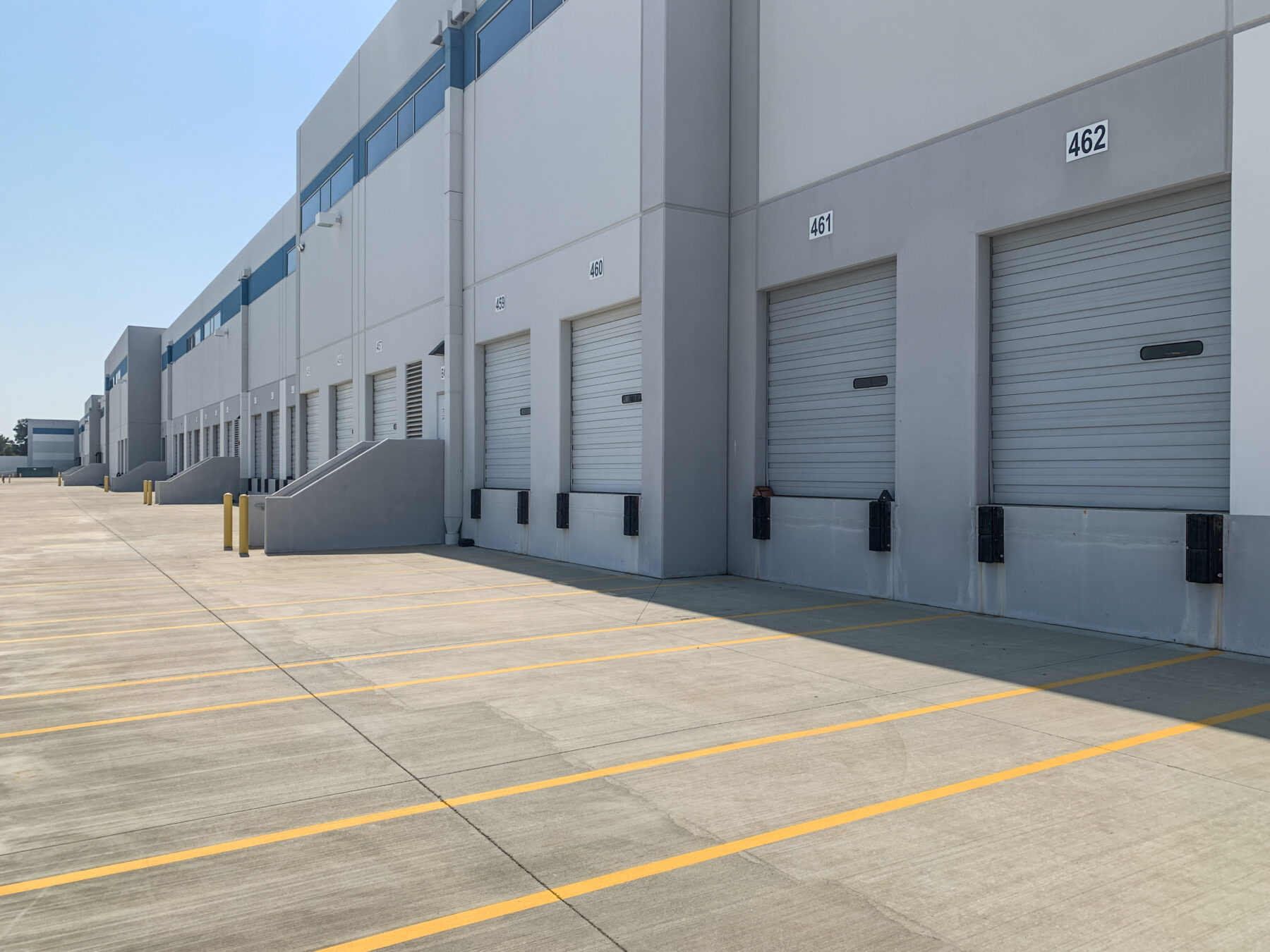Exploring Concrete, Sand, Gravel, and More for Warehouse Construction
April 29, 2024

Material selection significantly impacts warehouse construction. Concrete types—plain for flooring, reinforced for structural stability, and high-strength for load—differ depending on the requirements. Good-quality sand, absent of impurities and with the appropriate grain size, will enhance concrete’s strength and life. Gravel lends structure and increases the strength of the concrete. Responsible sourcing increases a building’s sustainability, while quality control at all construction stages leads to safety and dependability. Further investigation into material selection will ensure a warehouse meets all operational needs.
Importance of Material Selection
Choosing the right materials ensures the warehouse construction project’s structural integrity and durability. With large construction projects like this, each choice you make directly impacts the future of the structure. When it comes to sand and gravel, understanding the different types available and their specific benefits is vital. These are not just commodities but the backbone of the project’s stability and longevity.
Material selection must be approached with precision. Tailoring the sand and gravel mix ratios to meet the specific project requirements can significantly enhance performance. It’s not just about selecting quality materials but also about understanding how these choices fit into the larger picture of the construction goals.
Responsibly sourcing these materials significantly impacts the project’s sustainability and ethical standing. Opting for environmentally friendly and locally sourced sand and gravel can boost the warehouse’s eco-profile and comply with the commitment to sustainability.
Types of Concrete for Warehouses
After selecting sand and gravel, the next step is to think about the specific types of concrete suitable for various parts of the warehouse. Plain concrete, commonly used due to its cost-effectiveness, is ideal for the floors and foundations, harnessing the basic types of sand and gravel to guarantee stability. However, for areas demanding higher durability, such as columns and beams, reinforced concrete is the go-to choice. This variation incorporates steel reinforcements that greatly enhance structural integrity, essential for different construction needs.
For structures necessitating high load-bearing capacities or extended spans, consider prestressed concrete. This material is pre-compression treated to endure substantial stresses, enhancing the warehouse framework’s longevity and resilience. In scenarios where weight reduction or enhanced insulation is crucial, lightweight concrete offers an excellent solution, balancing the building’s weight with thermal efficiency.
High-strength concrete is indispensable if the warehouse is located in a seismic zone or needs to support heavy machinery. This type provides superior structural integrity and ensures the durability important for handling intense operational demands. Each type of concrete, tailored to specific warehouse requirements, leverages the foundational qualities of sand and gravel, which are pivotal in achieving the construction objectives.
Sand Quality and Sourcing
Evaluating sand quality for warehouse construction pays special attention to grain size, shape, and cleanliness for concrete strength and durability. Geological origin will also influence these characteristics. For instance, riverbank sand, which is made of smoother grains due to water erosion, may not suit high-strength concrete, where rougher textures provide better bonding.
Impurities and moisture in sand significantly influence the workability and strength of concrete, making extensive testing a necessity.
Role of Gravel in Construction
Understanding the role of gravel in warehouse construction means a better appreciation of its versatility. Its contribution to the strength and functionality of concrete mixtures forms the backbone of every structure.
Structural Integrity: Different types of gravel, like crushed stone and river rock, are chosen based on their ability to compress and bind together, which is fundamental in supporting heavy loads and maintaining the longevity of concrete structures.
Mix Quality: Integrating the right gravel type ensures efficient mixing, which is important for achieving concrete’s desired consistency and strength. This practice is one of the best ways to ensure durability and functionality.
Look and Use: Beyond structural benefits, gravel serves decorative and practical purposes in landscaping, contributing to a construction site’s overall aesthetics and drainage systems.
Efficiency and Longevity: Understanding and utilizing the unique characteristics of various gravel types can significantly optimize construction projects, making them more efficient and extending the lifespan of the structures.
Aggregate Storage Systems
Different aggregate storage systems mean alternatives in the efficiency and effectiveness of concrete batching and mixing operations. The choice between a warehouse or a steel structure system can impact warehouse construction.
The warehouse-type aggregate batching station integrates components like hoppers, sensors, and vibrators. These elements work together to guarantee smooth material flow and precise measurement, which is vital for maintaining the quality of the concrete mix. The structure is designed to prevent clogging and facilitate easy maintenance, making it a reliable operation choice.
Steel structure type batching stations are known for their robust construction. Featuring elements such as partition boards and pressure sensors, they are tailored to handle large volumes of materials. The aggregate metering hoppers and sieves are precisely engineered to enhance the accuracy of the batching process.
Both systems typically incorporate multiple silos, generally ranging from three to five, allowing for efficient storage and management of different aggregates. The choice between these systems depends on the specific operational needs and the spatial dynamics of the construction site. Remember, the right aggregate storage system is key to a streamlined and successful concrete production.
Equipment for Concrete Batching
Having explored various aggregate storage systems, let’s focus on the specific equipment used in concrete batching to enhance the project’s efficiency and output. The right tools simplify the workflow and guarantee that the construction meets the highest standards of quality and durability.
Mixers: Concrete batching plants rely on mixers to combine cement, sand, and gravel, based on volume and mixing style requirements.
Sensors: Installed throughout the batching plant, sensors accurately monitor moisture content, temperature, and mix consistency, ensuring each batch meets the requirements.
Grout Injection Systems: Essential for projects requiring intricate cement placement, these systems inject grout accurately and efficiently, filling voids and reinforcing structures as needed.
Accurate Monitoring Equipment: This includes devices that continuously measure and adjust the concrete mix properties, guaranteeing consistency and adherence to construction specifications.
Monitoring and Quality Control
To guarantee the warehouse construction meets the highest standards, it’s essential to implement rigorous monitoring and quality control of all materials and processes. Monitoring concrete mix ratios is paramount; this ensures the strength and durability that the structure demands. Consistently testing the sand and gravel used, will mean verifying they meet the strict specifications required for construction projects.
It’s also important to monitor the moisture content of aggregates. This step prevents complications like segregation in the concrete mix, which can compromise the integrity of the warehouse. Awareness of the storage conditions of materials is a must. Poor storage can lead to contamination or degradation, which could undermine construction efforts.
Adhering to strict quality control protocols isn’t just about ticking boxes. It’s about ensuring the long-term stability and safety of the warehouse. These protocols guide every construction step, from selection and testing to storage and mixing. By embracing these practices, a builder will be crafting a legacy of quality and reliability. With each process, the warehouse will reflect meticulous craftsmanship and attention to detail.

